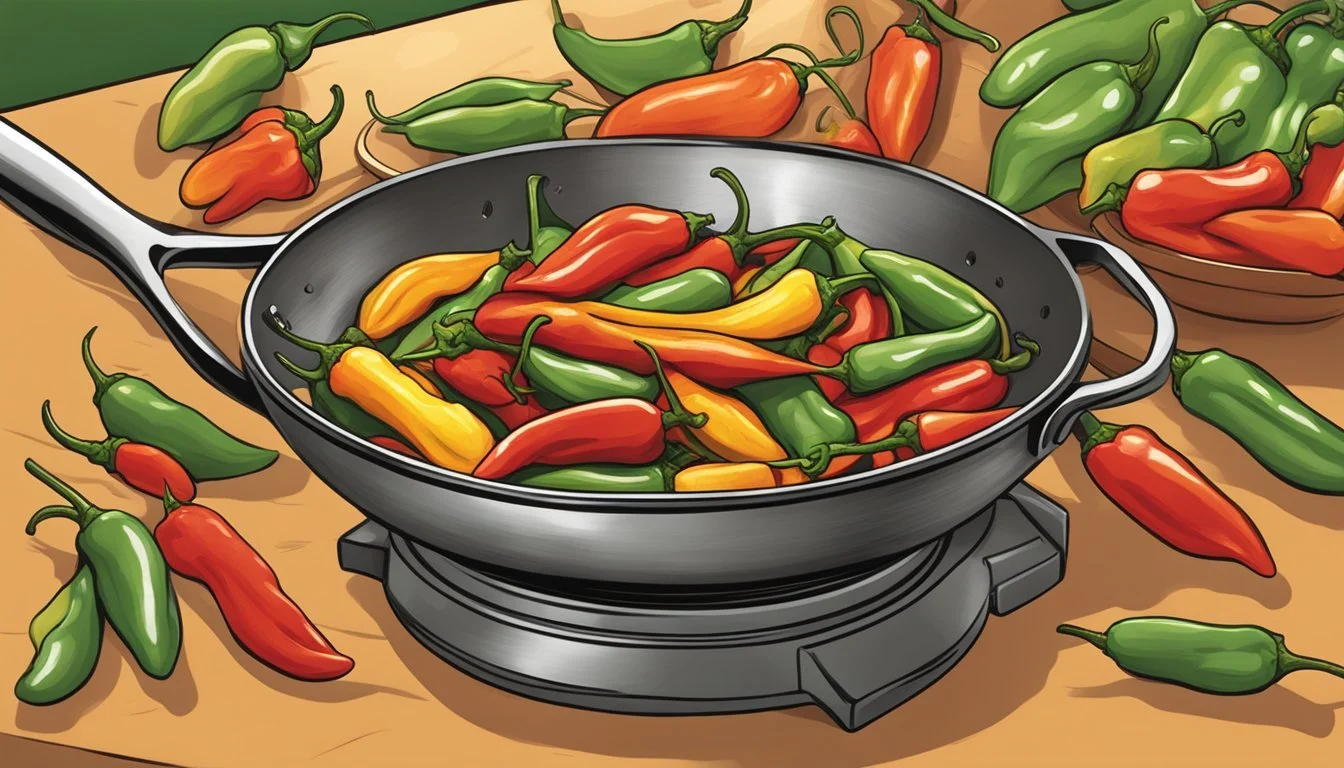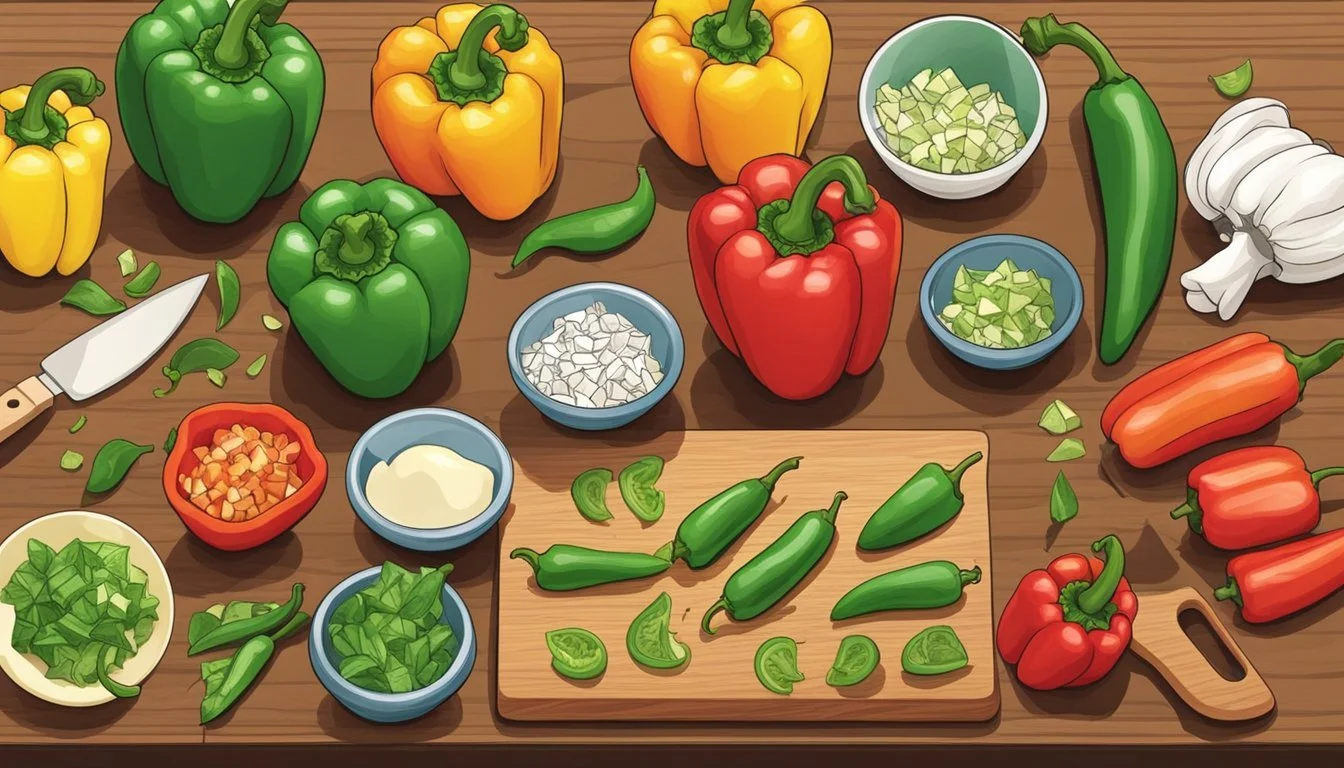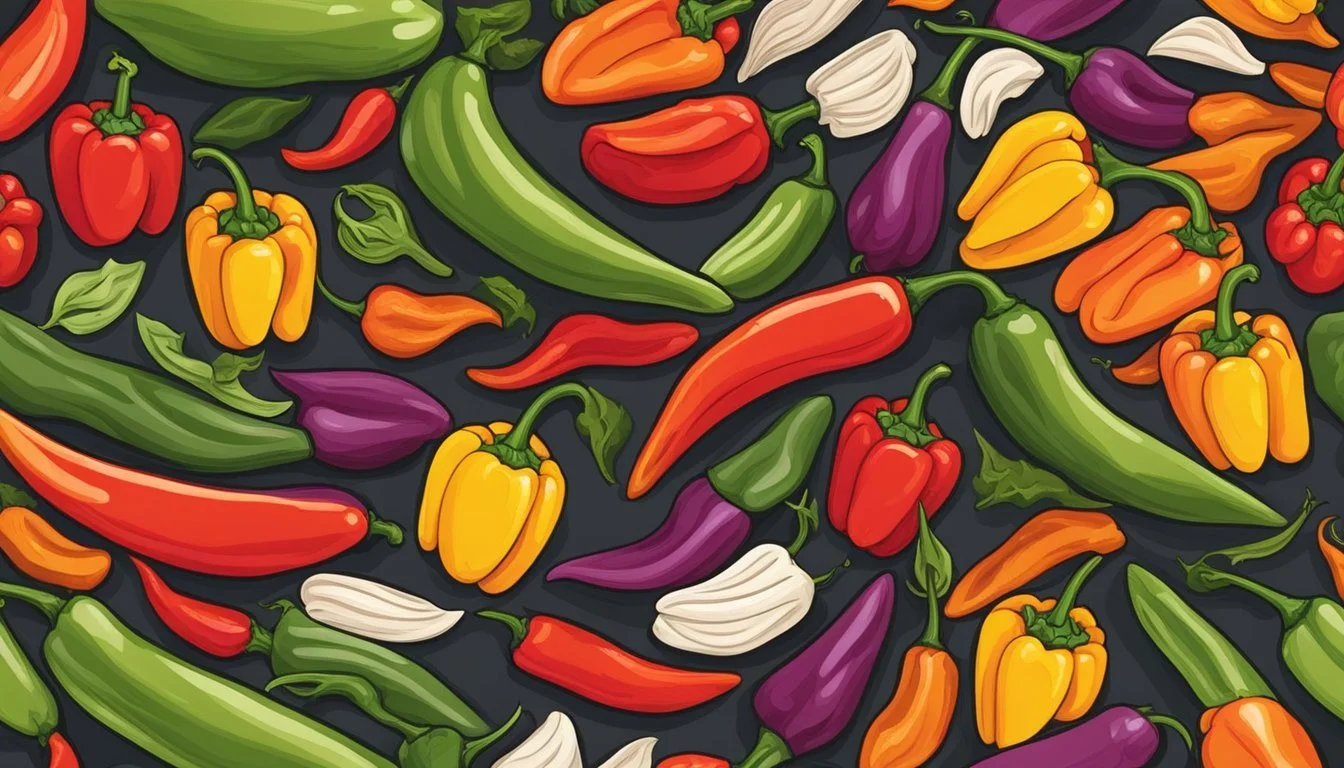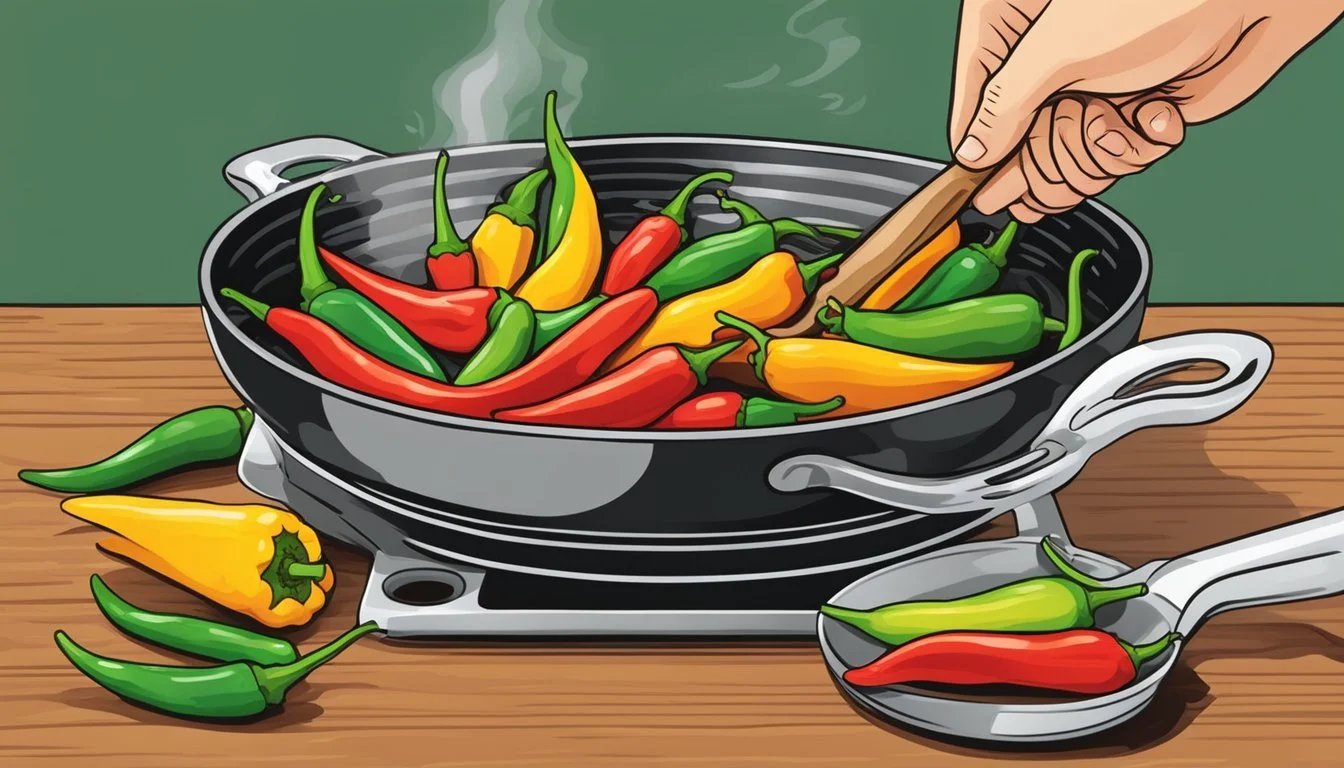How to Cook with Texas Peppers for Heat and Flavor
Mastering Spicy Cuisine
Cooking with Texas peppers offers both heat and a distinctive flavor that can transform a dish from bland to bold. The range of peppers available in Texas is broad, and understanding the characteristics of each type is crucial for achieving the desired outcome in a recipe. Peppers in Texan cuisine are versatile and can be incorporated into various dishes, from the iconic chili con carne to soups and salads. The heat levels can vary greatly, so chefs should choose the type of pepper based on both the intended spiciness and the flavor profile they wish to impart.
Selecting the right Texas pepper is an art in itself; with varieties like jalapeño, poblano, and serrano, each offers a unique level of spiciness and flavor. A chipotle pepper, for instance, is a smoked jalapeño that introduces a deep, smoky essence perfect for meats and robust sauces. Cooking with these peppers involves more than just adding heat; it's about building layers of flavor that complement the main ingredients of the dish. Careful handling and preparation of Texas peppers ensure that the heat enhances rather than overwhelms the flavors.
Incorporating peppers into Texan cuisine requires a balance of technique and timing. Whether sautéing to release their flavors or charring to add a smoky note, chefs must harness the distinct traits of these peppers to create harmonious dishes. The key is to understand how the peppers’ flavors change with different cooking methods and how they interact with other components in the recipe. With the right approach, Texas peppers are an indispensable ingredient for anyone looking to infuse their cooking with authentic Southwest heat and flavor.
Understanding Texas Peppers
Exploring Texas peppers involves a deep appreciation for their variety, understanding their heat levels, and recognizing the nutritional value they bring to dishes.
Types of Texas Peppers
Texas peppers vary widely in flavor, heat, and color. Here are some of the most popular:
Jalapeño Peppers: These are medium-sized peppers that are commonly found in Texas cuisine, delivering a moderate kick.
Serrano Peppers: Slightly hotter than jalapeños, serranos are small and commonly used in salsas.
Anaheim Peppers: These are mild with a slight zing and are often used in Texan chili dishes.
Poblano Peppers: Ancho peppers are dried poblanos, which are mild and add a deep, earthy flavor.
Other notable varieties include habanero, shishito, cubanelle pepper, fresno, guajillo, habanero, and pasilla peppers.
Heat Scale and Scoville Units
The heat of Texas peppers is measured using the Scoville Scale. Here's a quick overview of where some stand (Scoville units):
Bell Peppers: 0 (no heat)
Poblano Peppers: 1,000–1,500
Jalapeño Peppers: 2,500–8,000
Serrano Peppers: 10,000–23,000
Habanero Peppers: 100,000–350,000
As the Scoville units increase, so does the perceived heat of the peppers.
Nutritional Benefits
Peppers are not just about heat; they also offer nutritional value:
Vitamin C: Capsicum species like bell peppers are high in vitamin C.
Low in Sugar: Peppers are naturally low in sugar, making them a healthy addition to any diet.
Dietary Fiber: Peppers provide dietary fiber, which is essential for digestive health.
Antioxidants: Many peppers come in different colors, including yellow, green, and red, all of which contain antioxidants that are beneficial for overall health.
Selecting and Preparing Peppers
When cooking with Texas peppers, selecting the right variety and proper preparation are essential for adding both heat and flavor to any dish.
Choosing the Right Peppers for Your Dish
Texas cuisine often incorporates a range of peppers, each offering a distinct level of heat and flavor. The red bell pepper is known for its sweet, mild flavor and is excellent in salsas and salads. For more heat, one might choose a poblano pepper, which is moderately spicy and ideal for stuffing or roasting. Dried peppers, such as chipotle, which are smoked, dried jalapeños, add a deep, smoky flavor to dishes. It's vital to understand the scale of heat, measured in Scoville Heat Units (SHU), to select peppers that suit the desired spice level of the dish without overwhelming other flavors.
Mild Varieties: Red bell peppers, Anaheim
Medium Heat: Poblano, Jalapeño
Hot Varieties: Serrano, Chipotle
Very Hot: Habanero, Ghost pepper
Prepping Peppers for Cooking
Preparing peppers for cooking involves several steps to ensure they impart the desired flavor and texture. One should begin by thoroughly washing the peppers under cool running water. To prepare a red bell pepper or a poblano pepper, for instance, the cook would need to cut off the tops, remove the seeds, and discard any stems. The peppers can be left whole, sliced into strips, or diced, depending on the recipe requirements.
Pepper Preparation Steps:
1. Wash under cool running water.
2. Remove tops, seeds, and stems.
3. Cut into desired shape - strips, diced, etc.
For dishes such as chili, where the peppers need to blend smoothly with other ingredients like diced onion, chopping the peppers into smaller pieces is recommended. When using dried peppers, toasting them briefly can unlock more flavor, but they should be rehydrated in warm water before cutting or blending into a recipe. Remember that handling very spicy peppers like chipotle may require gloves to prevent skin irritation, and one should avoid touching sensitive areas like the eyes.
Cooking Techniques and Equipment
The proper cooking techniques can enhance the distinct flavors and heat of Texas peppers. Utilizing specific equipment like a dutch oven, stovetop, slow cooker, or Instant Pot ensures consistent results.
Roasting and Charring
Roasting and charring peppers on a stovetop or in an oven develops a deep, smoky flavor. The process involves:
High Heat: Set the oven to broil or heat a dry skillet on high.
Frequent Turning: Rotate peppers to char each side evenly.
Resting: Enclose the charred peppers in a container, allowing them to steam for easy skin removal.
Dicing and Sautéing
For a more mellow heat and to release the aromatic flavors, peppers are diced and sautéed in a fat source such as oil or butter. Steps include:
Preparation: Washing, removing stems, and dicing.
Cooking Technique: Heat oil or butter in a dutch oven or skillet over medium heat before adding the peppers.
Simmering and Stewing
Peppers added to long-cooking dishes impart flavor and heat throughout. Key considerations are:
Cooking Vessels: Use a slow cooker, Instant Pot, or a sturdy dutch oven.
Duration: Simmer dishes on low heat for several hours for tender, well-infused results.
Incorporating Peppers into Texas Cuisine
Texas cuisine is known for its bold flavors and robust heat, often achieved by skillfully incorporating various types of peppers. These spicy additions transform dishes into memorable meals with a distinctive Texas kick.
Texas Chili Essentials
The hallmark of Texas chili is its rich, meaty flavor, often enhanced by the depth and heat from chili peppers. A traditional Texas Chili recipe starts with a base of chuck roast, browned to perfection, and excludes beans, adhering to authentic preferences. Peppers such as jalapeno, serrano, and anaheim add complexity, while spices like cumin, paprika, and chili powder build the essential profile. For thickness, some cooks swear by masa harina, creating the ideal consistency without resorting to corn flour.
Beef chuck roast
Diced tomatoes
Garlic
Onions
Spices:
Cumin
Paprika
Chili powder
Peppers:
Jalapeno
Serrano
Anaheim
Tex-Mex Favorites
Tex-Mex dishes often feature jalapeno peppers and cumin for that signature spice and earthiness. Chili con carne shines with spices and, sometimes, an addition of beer for a unique flavor. Stews and broths incorporate garlic, onions, and tomato sauce for depth, while diced green chilies contribute a mild heat. Top flavorsome beans with shredded cheddar cheese and a spoonful of sour cream to balance the zest.
Spices and Condiments:
Ground black pepper
Oregano
Bold Tip: A hint of chocolate or adobo sauce can elevate the authenticity.
Modern Texas Fusion
Contemporary Texas chefs are pushing boundaries by pairing the heat of habanero or jalapeno peppers with unconventional ingredients like vinegar or even chocolate to balance the spice. Advanced techniques involve using ancho chili powder for a smoky undertone or a sprinkle of smoked paprika to innovate on classics such as Texas style chili. The result is a sophisticated blend of traditional tastes with new age twists.
Innovative Pairings:
Beef with a hint of dark chocolate
Pepper Mixture:
Combine habanero, jalapeno, and serrano peppers for varied heat levels.
A base of beef or chicken stock infused with spices and peppers enhances any fusion stew.
Advanced Flavor Pairings and Combinations
Exploring advanced flavor pairings and combinations allows one to elevate the use of Texas peppers, balancing their innate heat with complementary flavors, and maximizing their potential in dishes.
Balancing Spice with Sweet and Savory
When cooking with hot peppers such as jalapeño or serrano, a balance of flavors is key. Incorporating sweet elements like pineapple or mango can offset the heat, creating a more complex taste profile. For instance, a pineapple and chili jam can serve as a sharp and sweet condiment, which pairs well with robust cheese selections or as a glaze for chicken dishes. Similarly, combining onions or maple syrup with peppers can temper the spiciness, while adding a savory depth to the overall dish.
Beans, often a staple in Texan cuisine, benefit from the warmth of peppers. A dash of sugar or the subtle sweetness of caramelized onions can counteract the heat, making a chili or stew palatable yet flavorful.
Complementary Herbs and Spices
Herbs and spices that complement Texas peppers can vary widely, but some pairings create distinct and desirable flavors. Combine garlic and oregano with peppers for a classic, savory flavor base suitable for meats or sauces. Mint, while less conventional, can also offer a refreshing contrast when used with chili, as seen in the creation of a pineapple and mint jam with a spicy kick.
Infusing peppers into beer can yield intriguing flavors. For those cooking with beer, the following steps can guide the flavor pairing process:
Balance the Weights: Choose a beer that matches the dish's weight, light for delicate dishes and robust for hearty ones.
Compare and Contrast the Components: Consider the beer's components—hop bitterness, malt sweetness, and so on—and how they play with the pepper's flavor.
Bridge the Flavors: Find a common flavor between the dish and the beer that can act as a bridge, enhancing both.
Safety Tips and Tricks
Cooking with Texas peppers can add both flavor and heat to a dish, but it's important to handle and store them correctly to ensure safety and maintain their quality.
Handling Hot Peppers Safely
When dealing with hot peppers, it's crucial to protect oneself to prevent irritation or burns. Always wear gloves when cutting or handling hot peppers; the oils can cause a burning sensation if they come into contact with skin or eyes. If one inadvertently touches their face or eyes, they should immediately wash the affected area with cold water.
Do not touch your face or eyes while handling peppers.
Wash all utensils and cutting boards thoroughly after use to remove pepper oils.
In the event of skin irritation, apply vegetable oil to the affected area to dissolve capsaicin, the compound responsible for the heat, and then wash it off with soap and water.
When preparing peppers for dishes like sandwiches, carefully remove the seeds and membranes for less heat, as these parts contain the highest concentrations of capsaicin.
Storing and Preserving Peppers
Storing peppers properly is key to extending their shelf life and maintaining their piquancy and nutritional benefits. Fresh peppers should be stored in the refrigerator, preferably in the vegetable drawer where humidity levels are higher, which helps keep them crisp. For long-term storage, peppers can be:
Dried: Spread out thinly on a tray and placed in a dry, well-ventilated spot until completely dehydrated.
Frozen: Cut into desired sizes, and optionally blanch, before freezing to preserve flavor and texture.
Pickled or canned: Submerged in a vinegar solution or brine, then stored in airtight containers.
It's also important to note that different pepper varieties have different shelf lives, ranging from a few days to a couple of weeks. Regularly check for any signs of spoilage such as wrinkles or soft spots.
Serving and Presentation
When incorporating Texas peppers into dishes, a cook’s objectives should focus on enhancing the flavor while also ensuring that the presentation is appealing to the eye. The vibrant colors and varied textures of peppers can significantly elevate the visual impact of a dish.
Garnishing with Peppers
Peppers serve as an excellent garnish, adding a burst of color and flavor. Texas peppers, when sliced thinly, can be artfully placed atop dishes just before serving. For those who enjoy a milder heat, bell peppers in a variety of colors can be used, while slices of jalapeño or serrano peppers are perfect for a spicier kick. Chefs may also opt for shredded cheese, such as cheddar or Monterey Jack, to complement the peppers and add a smooth, cooling contrast. A dollop of sour cream can be used not only as a garnish but also as a way to temper the heat for those who prefer a less intense experience.
Creating Visually Appealing Dishes
The key to a visually appealing dish lies in the use of colors and layers. Chefs should consider the palette of the plate, arranging the peppers in a manner that showcases their vibrant reds, greens, yellows, and oranges. Here are some presentation tips:
Contrast: Boldly colored peppers stand out against neutral-toned dishes, such as rice or enchiladas.
Balance: Distribute the peppers and garnish evenly to create a harmonious appearance.
Focus: Allow the peppers to be the star; peppers may be julienned and








